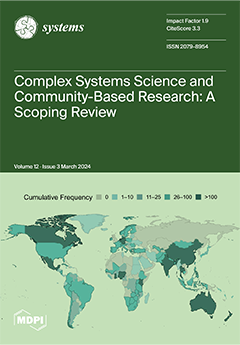Technologies, such as Chat Generative Pre-Trained Transformer (ChatGPT), are prime examples of Generative Artificial Intelligence (AI), which is a constantly evolving area. SMEs, particularly startups, can obtain a competitive edge, innovate their business models, gain business value, and undergo a digital transformation by
[...] Read more.
Technologies, such as Chat Generative Pre-Trained Transformer (ChatGPT), are prime examples of Generative Artificial Intelligence (AI), which is a constantly evolving area. SMEs, particularly startups, can obtain a competitive edge, innovate their business models, gain business value, and undergo a digital transformation by implementing these technologies. Continuous but gradual experimentation with these technologies is the foundation for their adoption. The experience that comes from trying new technologies can help entrepreneurs adopt new technologies more strategically and experiment more with them. The urgent need for an in-depth investigation is highlighted by the paucity of previous research on ChatGPT uptake in the startup context, particularly from an entrepreneurial perspective. The objective of this research study is to empirically validate the Generative AI technology adoption model to establish the direction and strength of the correlations among the adoption factors from the perspectives of the entrepreneurs. The data are collected from 482 entrepreneurs who exhibit great diversity in their genders, the countries in which their startups are located, the industries their startups serve, their age, their educational levels, their work experience as entrepreneurs, and the length of time the startups have been on the market. Collected data are analyzed using the Partial Least Squares Structural Equation Modeling (PLS-SEM) technique, which results in a statistical examination of the relationships between the adoption model’s factors. The results indicate that social influence, domain experience, technology familiarity, system quality, training and support, interaction convenience, and anthropomorphism are the factors that impact the pre-perception and perception phase of adoption. These factors motivate entrepreneurs to experiment more with the technology, thereby building perceptions of its usefulness, perceived ease of use, and perceived enjoyment, three factors that in turn affect emotions toward the technology and, finally, switching intentions. Control variables like age, gender, and educational attainment have no appreciable effect on switching intentions to alternatives of the Generative AI technology. Rather, the experience factor of running businesses shows itself to be a crucial one. The results have practical implications for entrepreneurs and other innovation ecosystem actors, including, for instance, technology providers, libraries, and policymakers. This research study enriches the Generative AI technology acceptance theory and extends the existing literature by introducing new adoption variables and stages specific to entrepreneurship.
Full article





